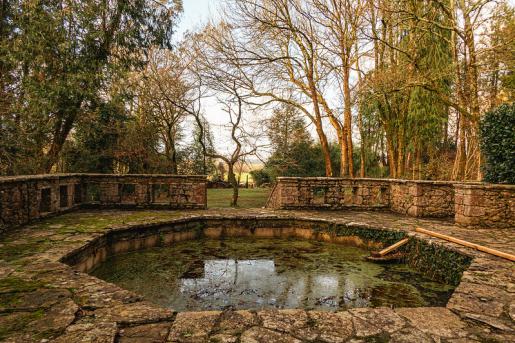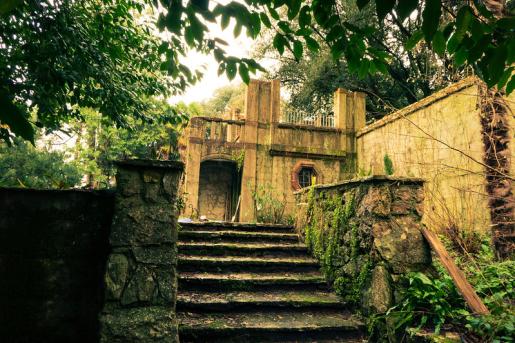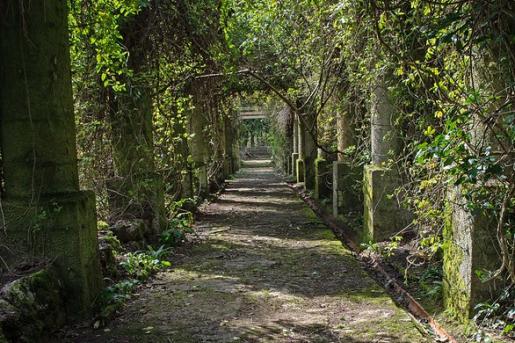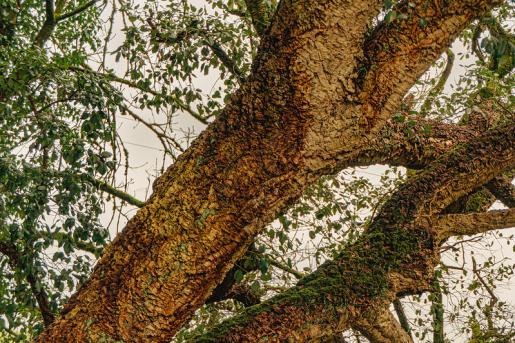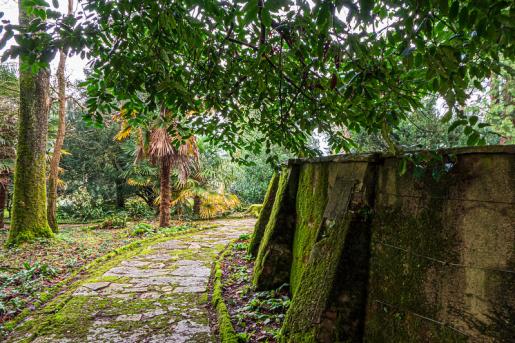- Gardens
- Private Gardens
- C20
Arthur Smith Graham purchased the Great Ambrook estate in 1901 and employed a local architect, Thomas Henry Lyon (1869 - 1953) to design a music room which extended the Georgian house considerably. Thomas Lyon is an architect of national importance, being the first Director of Design at the School of Architecture at Cambridge University and the designer of Sidney Sussex College Chapel.
Arthur Smith Graham (1871 – 1928) was an aesthete of considerable means. The garden that Thomas Lyon designed and built for him between 1909 and 1912 was in the spirit of the age and one can see some links with the style of Harold Peto. Interestingly, Arthur Graham’s brother had commissioned Ernest George to build Busbridge Hall in Surrey in 1906 and employed Gertrude Jekyll to produce some garden designs, while his brother-in-law commissioned W. F. Unsworth and H. Inigo Triggs to design and build his house and garden, which included a small walled Italianate section, at Ashford Chace in Hampshire in 1912.
The Italian Garden was constructed on higher ground to the east of the house . It covers an area of 4-acres and comparing the 1842 tithe map, 1904 sales map and the 1954 edition OS Map it can be seen that the garden was sited across the existing boundaries of two fields. The garden is surrounded on three sides by rendered walls, 15 ft high in parts and wired for climbing plants. There is a small walled fruit garden between the Italian Garden and Great Ambrook Avenue.
The garden has a special and unique charm. The garden was designed as a walk with some unusual features to give an interesting visual experience along the way. It is a fluid design which relates to the earlier tradition of picturesque walks rather than the compartmentalised formal layouts of the Arts and Craft era. The garden has several interesting structures and features. As one walks up the hill a balustraded terrace closes the vista. The structure, which overlooks the tennis lawn, has an octagonal pool and marble bench. Beyond the rose garden, an avenue leads to the summerhouse which is the most imposing structure; a gate leads to a secluded arbour on the outside of the wall giving country views towards Dartmoor.
The sunbathing area beside the bathing pool is at the end of another walk which runs along most of the south-east side of the Site and includes a section under a 111ft long pergola. From the a central view point, giving views of parkland trees, the palm avenue provides a short link to the principal path, adjacent to which is a wild sunken area which might have been a quarry.
Under the focal summerhouse terrace there is a huge spring-fed tank which, together with other lined tanks feed the complex water system, bathing and ornamental pools, and may once have provided the water supply to the house. The wide stone-flagged paths are edged with shallow rills to carry the water down the site and give interest to the walk.
Graham planted a variety of trees and shrubs, many of which remain, including maidenhair trees, Monterey cypresses and western red cedars. From the original lead plant tags that have been found it is clear that some plants were imported from the Rovelli brothers renowned nursery on Lake Maggiore.
Arthur Smith Graham died in 1928. The garden was still in good condition when the Devonshire Association visited in 1946 ‘the fine Italian garden at Great Ambrook, laid out ot great expense by the late Mr Graham’. The last Head Gardener left in 1961 and the Great Ambrook estate was broken up in 1963 by which time the site was already overgrown, the situation quickly worsening from then onwards. When Ken and Doris Rees purchased the site in the 1980s, it appeared to be woodland. With some help, they gradually uncovered the paths and structures but with a gentle respect for such a ‘sleeping beauty’. The current owners purchased the garden in 2016 and after securing National Lottery funding in 2020 began structural restoration supported by a team of volunteers.
The Italian Garden east of Great Ambrook is the only known extant example of a garden created by Thomas Lyon.
For a full description please view the Historic England Register of Parks and Gardens of Special Historic Interest
Report by Carolyn Keep extensive research by Angela Dodd-Crompton
Photo credit: Liz Mary Photography Devon

